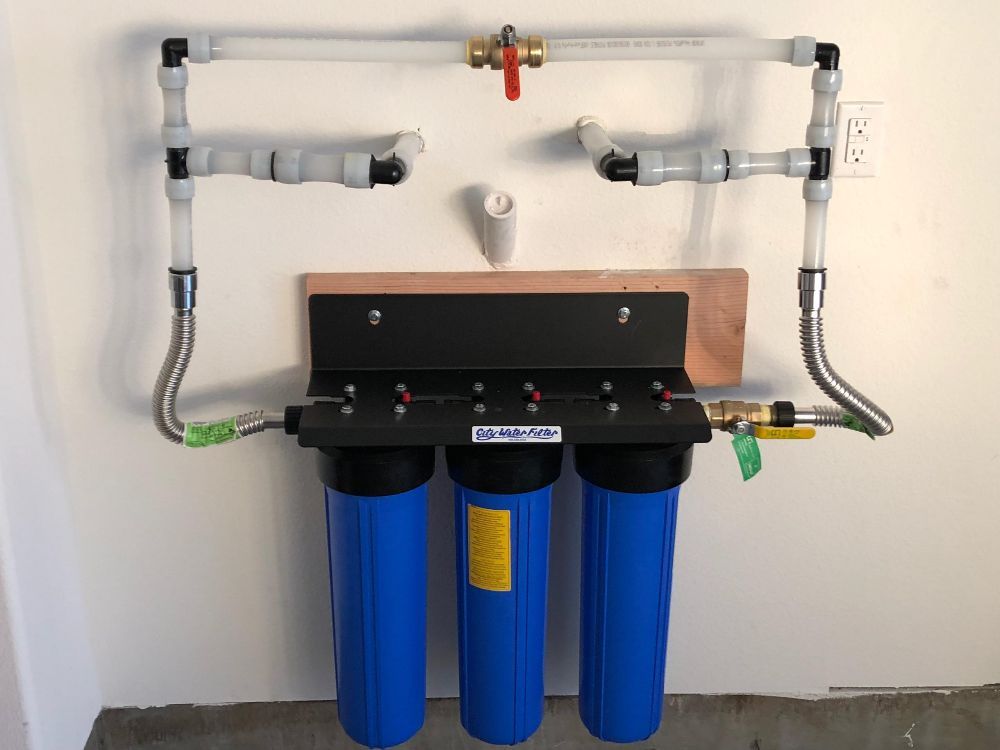What are the Benefits of Using a Whole House Water Filter?
What are the Benefits of Using a Whole House Water Filter?
Blog Article
Were you trying to locate related information around What are the Benefits of Using a Whole House Water?

Entire home water filters are the ideal alternative for people that are interested in having a residence that offers clean, drinkable water. Along with supplying quality alcohol consumption water throughout the house, an entire house water filter likewise provides advantages such as removing contaminations that cause detecting in water that is used to clean dishes. Unfiltered water can additionally cause issue such as corroding pipes and devices, ruining clothing that is cleaned and also stain sinks or showers. Although entire home water filters are normally utilized in property homes, they can additionally be a reliable choice for apartments or offices.
In the beginning, it may appear that whole home water filters would certainly be extremely costly when contrasted to other filter alternatives, however they are in fact a very cost-efficient alternative for water purification. The price variety of these water filters is huge, starting at two hundred bucks and also costing as much as one thousand dollars. The cost of the filters depends on their size, material as well as life expectancy. This might seem like an incredibly high cost, yet when compared with other filter options, it is really really affordable due to the amount of filtering system that it provides.
Whole home water filters cleanse water in the exact same style that other filters, such as counter top or under sink filters, do. The distinction is that it calls for just one filter, which is attached to the main water source, rather than needing numerous water filters to be attached to different devices. Just like the other filters, entire home water filters purify tap water by forcing it through several various phases of filtering. Among the stages is carbon filtration. Carbon is an efficient technique of filtering water because it is permeable and also has the capacity to eliminate small and huge contaminations. Carbon is vital in removing unpredictable organic carbon substances, which in many cases can trigger severe damage to the liver, kidney or main nerve system. Carbon likewise gets rid of unsafe substances such as pesticides, commercial solvents and insecticides.
One more crucial action of the filtering procedure includes a procedure such as ionization or micron filtration. This step gets rid of hundreds of pollutants found in tap water, and also transforms the water to fantastic tasting, healthy alcohol consumption water. As pointed out previously, the main benefit of whole residence water filters are that they supply filtered water throughout the house with the use of just one filter.
One more benefit of whole house water filters is the lengthy life expectancy that they supply. Most of these filters last between fifty as well as one hundred thousand gallons of water. For lots of, the major negative aspect of whole home filters is the higher than average cost. Although these filters are really inexpensive, they do need a large financial investment up front. Entire home water filters can also need a significant quantity work to set up.
How to Remove Iron Bacteria from Well Water
If your drinking water comes from a private well, you will likely experience issues with iron in your water. These issues can range from poor-tasting coffee to bright orange streaks in toilets and bathtubs. However, there’s an equally familiar but less understood problem linked to iron contamination: iron bacteria, also known as “iron-eating” or “iron-oxidizing” bacteria.
Iron is one of the most abundant minerals in the earth’s crust. As a result, elevated levels of iron are usually widespread in the groundwater that serves wells, often fostering the growth of iron bacteria in well water. These organisms can combine oxygen with iron, manganese, or other nutrients in the water to form a swampy sludge containing rust deposits, bacterial cells, and other organic and inorganic matter. This slimy residue then sticks the bacteria to pipes, pumps, plumbing fixtures, and appliances, causing clogging, foul tastes and odors, corroded pipes and plumbing fixtures, etc.
Well-water systems used infrequently or intermittently are typically more prone to iron bacteria problems. To make matters worse, removing these organisms from your water can be complicated, which is why we recommend taking steps to prevent them from forming in your well in the first place. Luckily, this article explains a highly effective way to remove iron bacteria from well water. Let’s start by discussing what iron bacteria are and how they get into well water.
Signs of Iron Bacteria in Water
If your household water supply is contaminated with iron bacteria, you might notice several unappealing signs that may indicate iron bacteria presence. These signs may include:
Stains and deposits on plumbing fixtures, pipes, and appliances
One of the most common indicators of iron bacteria in well water is stains and deposits on plumbing fixtures, pipes, and appliances. Water containing these organisms will leave rust-colored slime stains and deposits in sinks and toilets and inside well casings. You’ll also notice stains on fixtures, tableware, laundry, and various surfaces, that keep coming back no matter your cleaning method or efforts. These stains can be grey, yellow, or brown but are often a reddish-orange rust-like color.
Discoloration
Water containing iron bacteria can have a yellow, red, or orange hue. Further, visible deposits that have a clumpy or slimy consistency are very likely to have been caused by the presence of iron bacteria. Iron bacteria deposits are widespread in toilet tanks. In many cases, the deposits will take the form of a slimy coating along the walls of the tank. If the bacteria have been in the water for a lengthy period, the deposits could float in the water.
Oily sheen on the water surface
A quick and easy way to check for the presence of iron and other slimy-producing bacteria is to look in the water closet tank of your toilet. If you see an oily sheen on the surface of the water and can feel a slimy residue on the inside of the tank, slime-producing bacteria are likely present in your water system. If you use disinfectant in your tank, evidence of these conditions might not be so apparent.
https://www.springwellwater.com/how-to-remove-iron-bacteria-from-well-water/

I'm just very intrigued by What are the Benefits of Using a Whole House Water and I hope you liked the piece. Loved our posting? Please share it. Help someone else locate it. Kudos for your time. Visit again soon.
Hire A Pro
Report this page